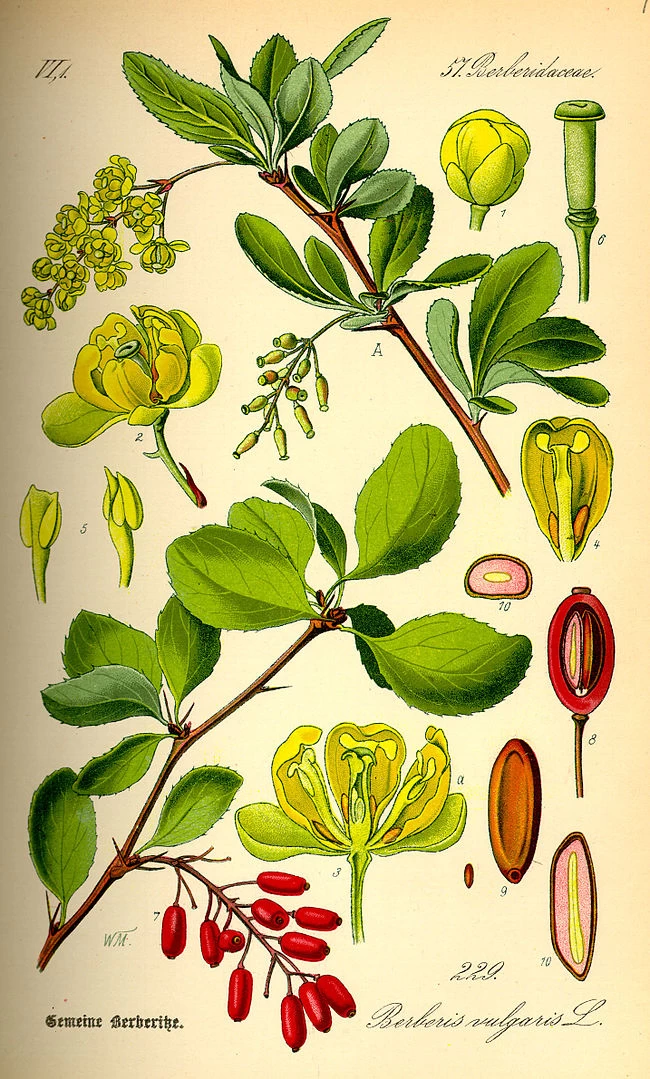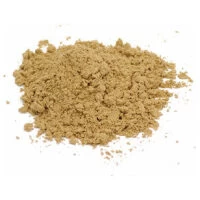Western Bulk Herbs – Barberry Root Bark
Barberry is one of the best herbs for liver trouble, loss of appetite, and enlarged spleen. It also is a laxative in small doses and a purgative in large doses. It has been known to regulate high blood pressure as well as lower fevers and help with sluggish gallbladders.
History shows it’s been used for typhoid fever, pyorrhea, and syphilis as well as psoriasis and vaginitis. It has been used for any number of infections. It can also be an eye tonic and has been used for sore throats when used as a gargle or as a mouthwash.
Latin Name:
Berberis vulgaris
Common Names:
Pipperidge Bush, European barberry, jaundice berry, pepperidge, sowberry, berberis
Parts Used:
The whole root, root bark, aerial parts and sometimes the fruiting body.
Properties:
Barberry is recognized as being cholagogue, alterative, anti-inflammatory, bitter tonic, antiseptic; appetizer; astringent; antacid; antipyretic, and antihemorrhagic
Traditional Uses:
Medicinal use of barberry dates back at least to the time of ancient Egypt, when it was combined with fennel seed to prevent plague.
Internal Applications:
When taken internally Barberry enhances the flow of bile through the liver and gallbladder, improving the function of the liver and purifying the blood of toxins. Due to this action, Barberry is an excellent herb to include in formulas for the liver diseases, hepatitis, or gallstones. It is also used for dyspepsia (heartburn) or various stomach disorders.
Topical Uses / Applications:
Because of its antiseptic qualities, Barberry can be used as a poultice, in salves or ointments. A good lotion for application to cutaneous eruptions has also been made from it.
Culinary Uses:
The Barberry used to be cultivated for the sake of the fruit, which was pickled and used for garnishing dishes. The ripe berries can be made into an agreeable, refreshing jelly by boiling them with an equal weight of fine sugar to a proper consistence and then straining it. They were formerly used as a sweetmeat, and in sugarplums, or comfits. It is from these berries that the delicious confitures d’epine vinette, for which Rouen is famous, are commonly prepared.
Chemical Properties:
Berberine alkaloid, thiamine, vitamin C, the carotenoids beta-carotene, lutein, and zeaxanthin, chromium, cobalt, and zinc, as well as oxyacanthine, berbamine, other alkaloidal matter, a little tannin, also wax, resin, fat, albumin, gum and starch.
Cautions:
Do not use Barberry if you are pregnant or nursing. Do not use if there is Bile duct obstruction from gallstones, cholangitis, bile duct cancer or pancreatic cancer. Do not use if there is liver disease, septic gall bladder inflammation, intestinal spasms, liver cancer, kidney disease or kidney failure.
Folk Lore:
In many parts of Europe, farmers have asserted that wheat planted within three or four hundred yards of a Barberry bush became infected with rust or mildew, but this belief has not been substantiated by recent observations.
*Disclaimer: These statements have not been evaluated by the Food and Drug Administration. This product is not intended to diagnose, treat, cure or prevent any disease.
Resources:
PDR for Herbal Medicines, 2000. Medical Economics Company, Montvale, New Jersey.
The New Holistic Herbal. David Hoffmann, 1990. Barnes and Noble Books, New York.
A Modern Herbal, Mrs. M. Grieve, (Dover Publications, New York, 1971)
Major Herbs of Ayurvedic. Compiled by Dahur Research Foundation and Dahur Ayurvet Limited, Ghaziabad, India., 2002. Churchill Livingstone, London, England.
Chinese Herbal Medicine: Materia Medica, Third Edition, Dan Bensky and Andrew Gamble, 1986. Eastland Press, Seattle, WA.








Reviews
There are no reviews yet.